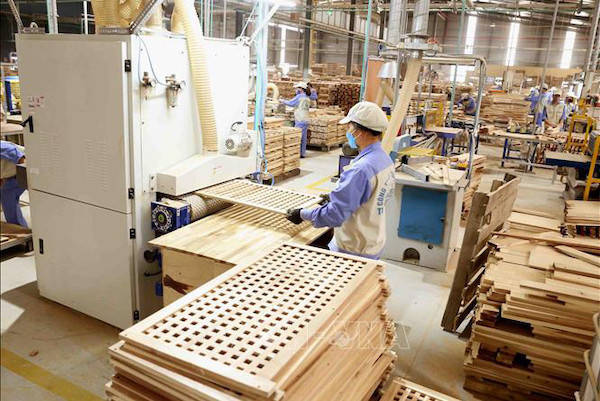
A businessman texted me: ‘I feel like I have a terrible headache. I don’t have good sleep."
I noted that the word ‘difficulty’ was repeated 13 times in the explanation report replying to the National Assembly Deputies’ inquiries presented by Prime Minister Pham Minh Chinh before the National Assembly last week. The word was repeated 19 times in the socio-economic report sent before.
The government has recognized the problem. The national economy, which to some extent ‘froze’ during the two years of fighting the pandemic, is continuing to face difficulties after reopening.
This can be seen in the fact that the index of industrial production in October increased only by 3 percent over the month before, a modest increase which was similar to the lockdown period.
The Ministry of Industry and Trade (MOIT) reported that the increase in the number of new orders has slowed down since September, in industries with high exports such as textile and garment, footwear, electronics and woodwork.
Some companies have reported smaller number of sales than expected, which has forced manufacturers to restrict the output increase in October.
The exchange rate trading band was widened recently. The move was a necessity in the context of the US FED continuously raising the dollar interest rates. However, this puts a heavy burden on the government in debt payment, and erodes the profit margin of Vietnamese enterprises.
In principle, exchange rate fluctuations have a heavy impact on enterprises with trade deficits and give strength to enterprises with trade surpluses. Which enterprises belong to the two types?
Statistics show that in the first 10 months, Vietnam enjoyed a trade surplus of $9.4 billion. Of this, the domestic sector saw a trade deficit of VND24.9 billion, while the foreign-invested sector saw a trade surplus of $34.3 billion (including crude oil).
This means that Vietnam enterprises’ profits eroded, while foreign invested enterprises enjoyed big benefits.
Many people say a low consumer price index (CPI) is a good thing. However, an economist warns that a low CPI could be explained by overtightening, which leads to two possible consequences.
First, enterprises have to sell products at low prices which cannot cover input costs. Second, high interest rates and a credit dearth can lead to slowed production. Low inflation is not always good.
Before the National Assembly last week, the Prime Minister affirmed that the government has managed to regulate the economy by both controlling inflation and accelerating GDP growth.
Tu Giang